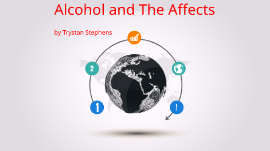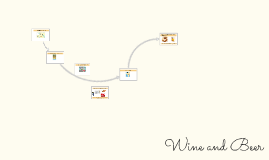BEER & WINE
Transcript: When was wine invented? Brewing process Vatican Beer in Germany $100000000 Some parts of the world Extra information about wine! Process: There are professional control over the wine-production. Cleaned machines, inspect and sanitize equipment. The most basic way to sanitize equipment is to boil your equipment in water. Chlorine (most common universally accessible sanitizer) Mashing:Mashing is the process of mixing milled grain with water, and heating this mixture up with rests at certain temperatures to allow enzymes in the malt to break down the starch in the grain into sugars, typically maltose. Lautering:Lautering is the separation of the extracts won during mashing from the spent grain. Boiling:Boiling the won extracts, called wort, ensures its sterility, and thus prevents a lot of infections. The Top 5 Beer Producing Countries: For wine... Beer brewing process Bello,Coronel,Rodriguez,de Beruti, Martin Fermentation:a metabolic process in which an organism converts a carbohydrate, such as starch or a sugar, into an alcohol or an acid. Grapes to Wine Beer is a major part of German culture. Until 1993, German beer was brewed according to the Reinheitsgebot( "German Beer Purity Law"), which only permitted water, hops, and malt as ingredients and stipulated that beers not exclusively using barley-malt, such as wheat beer, must be top-fermented. In 2012, Germany ranked third in terms of per-capita beer consumption, behind the Czech Republic and Austria. Country Production in Litres Percentage of World Total 1 China produce 49.0 billion liters 25.1% 2 United States produce 22.9 billion liters 11.7% 3 Brazil produce 13.2 billion liters 6.4% 4 Russia produce 9.7 billion liters 4.9% 5 Germany produce 9.4 billion liters 4.8% Beer How is beer made? Brewing process biggest consumer of wine Secondary fermentation: Secondary fermentation is an additional fermentation after the first or primary fermentation. Some beers may have three fermentation SANITARY CONDITIONS FOR THEIR PRODUCTION: Beer:an alcoholic drink brewed from malt, sugar, hops, and water and fermented with yeast. Conditioning:When the sugars in the fermenting beer have been almost completely digested, the fermentation slows down and the yeast starts to settle to the bottom of the tank.At this stage, the beer is cooled to around freezing. Filtering: Filtering the beer stabilizes the flavor, and gives beer its polished shine and brilliance. Not all beer is filtered. Packaging:is putting the beer into the containers in which it will leave the brewery. For beer... Definitions: Corona Extra is a pale lager produced by Cervecería Modelo in Mexico for domestic distribution and export to all other countries. It is one of the top-selling beers worldwide. Outside of Mexico, Corona is commonly served with a wedge of lime or lemon in the neck of the bottle to add tartness and flavor. In the United States, Corona Extra is the top selling imported beer. Ingredients: Corona Extra contains barley malt, rice and/or corn, hops, yeast, antioxidants (ascorbic acid), and propylene glycol as a stabiliser. Fermentation:starts as soon as yeast is added to the cooled wort. This is also the point at which the product is first called beer. It is during this stage that sugars won from the malt are metabolized into alcohol and carbon dioxide. Corona Work in the brewery is typically divided into 7 steps: Mashing, Lautering, Boiling, Fermenting, Conditioning, Filtering, and Filling. Process of wine: Sour beers sour can be controlled with proper cleaning and sanitation. If you can brew a hefeweizen, and your next beer doesn’t turn out to be one, you can brew a sour beer and not have your subsequent beers be contaminated. extra components BEER & WINE Wine:an alcoholic drink produced by the fermenting of grapes with water and sugar.

















